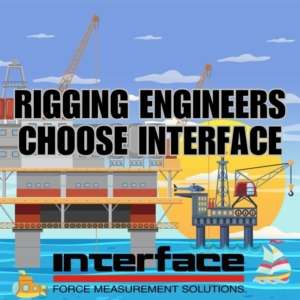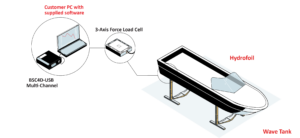Outlining Force Solutions for Structural Outrigging
 Across a wide variety of industries, heavy machinery, maritime, construction, and other infrastructure often need additional structural support. This includes support that prevents equipment, vessels, and buildings from falling over, capsizing or collapsing.
Across a wide variety of industries, heavy machinery, maritime, construction, and other infrastructure often need additional structural support. This includes support that prevents equipment, vessels, and buildings from falling over, capsizing or collapsing.
Typically, the solution to provide this critical structural support comes in the form of an outrigger. For vehicles, both land and maritime, an outrigger is a projecting structure, with specific meaning depending on types of vessels, or the legs on a wheeled vehicle that are folded out when it needs stabilization.
For buildings, outriggers are interior lateral structural systems provided to improve the overturning stiffness and strength of high-rise buildings. It is a lateral load resisting system that is located within the building. The whole system consists of a core structure connected to the perimeter columns of the building.
These types of structural supports became popularized in the 1980s as an addition to high-rise buildings as they are effective up to 150 floors due to its unique combination of architectural flexibility and structural efficiency. Outrigging has been adapted for large vehicles and boats, such as large cranes that are extremely top heavy and can create balance problems, or yachts that need to be stabilized when stored out of water.
With the addition of these supports, various forms of testing need to be done to ensure the outrigger can support the vehicle or structure it is installed upon. This is where Interface’s force measurement testing and monitoring products are utilized in different outrigging applications.
Interface load cells are used by outrigging engineers, civil engineers and heavy equipment manufacturers, oil and gas, construction industry and marine equipment companies. Read more why Rigging Engineers Choose Interface Measurement Solutions.
The role of force measurement sensor technologies in outrigging is to provide high accuracy measurement of the outrigging equipment in test and actual use. The applications range from integration of sensors into outrigger equipment, to load cells for real-time monitoring of the physical structure using outrigger supports.
The most common Interface products used for outrigging include:
- LP Stainless Steel Load Pin
- WTSLP Wireless Stainless Steel Load Pin
- ITL Tension Link Load Cell
- WTSATL Lightweight Aluminum Wireless Tension Link
- WTSATL-JR Aluminum Compact Wireless Tension Link
- ISHK-B Bow Type Crosby™ Cabled Load Shackle
- ISHK-D ‘D’ Type Crosby™ Cabled Load Shackle
- WTSSHK-B Wireless Crosby™ Bow Load Shackle
- WTSSHK-B-JR Wireless Crosby™ Bow Load Shackle
- WTSSHK-B-HL Wireless Bow Load Shackle
- WTSSHK-D Wireless Crosby™ Load Shackle
For example, Interface load shackle cells are used to measure the forces during outrigger testing as well as on the outrigger equipment that support the structure. The data from the sensor is critical information used to assess the structural integrity of the outrigger or structure and to identify any potential weaknesses.
Interface load cells, such as our load shackles or load pins, are typically placed in strategic locations on the outrigger or structure where the force is expected to be greatest. The load cell is then connected to a data acquisition system (DAQ) or indicator that records the force readings. The data can then be analyzed to determine the maximum force applied to the outrigger or structure, as well as the distribution of force over the structure.
Load cells can also be used to monitor the performance of outriggers or structures over time. This can be helpful in identifying any changes in the structural integrity that may be caused by wear and tear, environmental factors, or other factors. Utilizing instrumentation with alarm capabilities is helpful, as well as a tool for maintenance.
Load cells are an important safety feature in outrigging equipment. They can help to prevent accidents and ensure that the equipment is used safely. A load cell is used to prevent a crane collapse during the construction of a high-rise building in a large congested metropolitan city. The crane is used for lifting a heavy beam. The load cell alerts the operator when the load is too heavy.
Ultimately, force measurement provides several benefits to testing and monitoring different outrigger applications, including:
- Increased safety: By measuring the force applied to the outrigger, a load cell can help to prevent overloading and damage to the outrigger. It is also valuable for continuous monitoring during lifting use cases, such as with a crane or heavy machinery.
- Improved efficiency: By monitoring the performance of the outrigger, a load cell can help to identify any potential problems early on, which can help to prevent costly downtime.
- Reduced risk: By providing accurate data on the force applied to the outrigger, a load cell can help to reduce the risk of accidents and injuries.
Examples of how force measurement is used to test outrigger solutions in a variety of industries:
- In the oil and gas industry, load cells are used to test the outriggers of offshore drilling rigs. This helps to ensure that the rigs are safe to operate in high-wind and wave conditions.
- In the construction industry, load cells are used to test the outriggers of cranes and other lifting equipment. This helps to ensure that the equipment is safe to use and that it will not overload the outriggers.
- In civil engineering, load cells are used to test the structural integrity of bridges and other structures. This helps to ensure that the structures are safe to use and that they will not collapse underload.
Outriggers play a critical role in the safety and support of vehicles, infrastructure projects and massive structures. Interface force measurement products also play a necessary role in safeguarding outriggers and the operators. If you have an outrigging use case and are wondering which products are best suiting for your specific requirements, contact Interface Application Engineers for help.
Construction Brochure Interface supports rigging engineers who design, plan, and oversee the rigging of heavy loads by providing high accuracy measurement solutions. Rigging is the process of using ropes, chains, and other lifting equipment to move and position large objects.
Interface supports rigging engineers who design, plan, and oversee the rigging of heavy loads by providing high accuracy measurement solutions. Rigging is the process of using ropes, chains, and other lifting equipment to move and position large objects.


